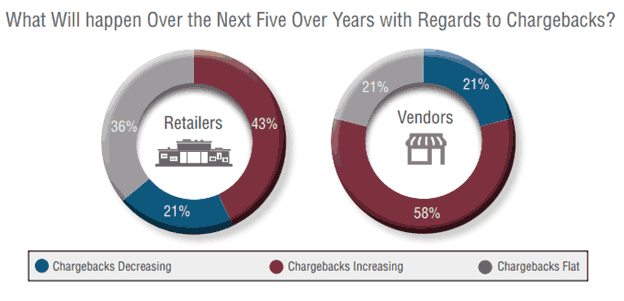As noted last month, Supply Chain Digest is back with our second biannual benchmarking study on the state of retail and vendor relationships and collaboration.
This year's report, based on a survey of 44 retailers and 165 consumer goods companies, of course comes at a time of immense change and stress for both retailers and many vendors, as ecommerce, Amazon and changing consumer behavior play havoc with many areas of these industries.
Supply Chain Digest Says... |
 |
Added one manufacturer: "We need to be smarter to understand the requirements and incorporate the strictest rules from all of our retailers into the general rules of our company."
|
 |
|
|
Here again this month we highlight some of the research findings from the report. Last month, we looked at current views of retailers and vendors relative to trends in chargebacks. This month in the RVPM Bulletin, we look at predictions for where chargebacks are headed.
Both retailers and vendors believe chargebacks are going to head still higher. As can be seen in the chart below, 43% of retailers and 58% or vendors expect chargeback levels to rise, with only 21% of each group predicting chargeback levels will decline.

In fact, slightly higher percentages of each group expect chargeback levels to rise in this study than in the previous study, in which 33% of retailers and 52% of vendors predicted chargeback levels would rise. It looks like from our current data that they were right.
Visit the Retail Vendor Performance Management home page to learn more
and subscribe to the monthly newsletter.
"Over the past 18 months we have become more attuned to identifying and reporting compliance errors. In the past many errors would be corrected without being reported. We expect this trend to continue over the next 2-3 years," one retailer noted.
Added one manufacturer: "We need to be smarter to understand the requirements and incorporate the strictest rules from all of our retailers into the general rules of our company."
As noted last month, Walmart and Target both have recently announced programs to reduce vendor variability. Grocers HEB and Kroger have also launched similar initiatives, in a first for the grocery sector. Is this a real overall trend in the consumer goods to retail supply chain? An emerging one, our survey data says.
A significant 30% or retailers say reducing vendor-caused supply chain variability is a major focus area, with another 59% saying it is at least a modest focus.
On the vendor side, 15% see variability as a major retail focus, though the vast majority (66%) say they aren't sure yet.
The excellent full report can be found here: The State of Retailer-Vendor Supply Chain Relationships 2018
Any comment on this article? Enter below.
Your Comments/Feedback
|